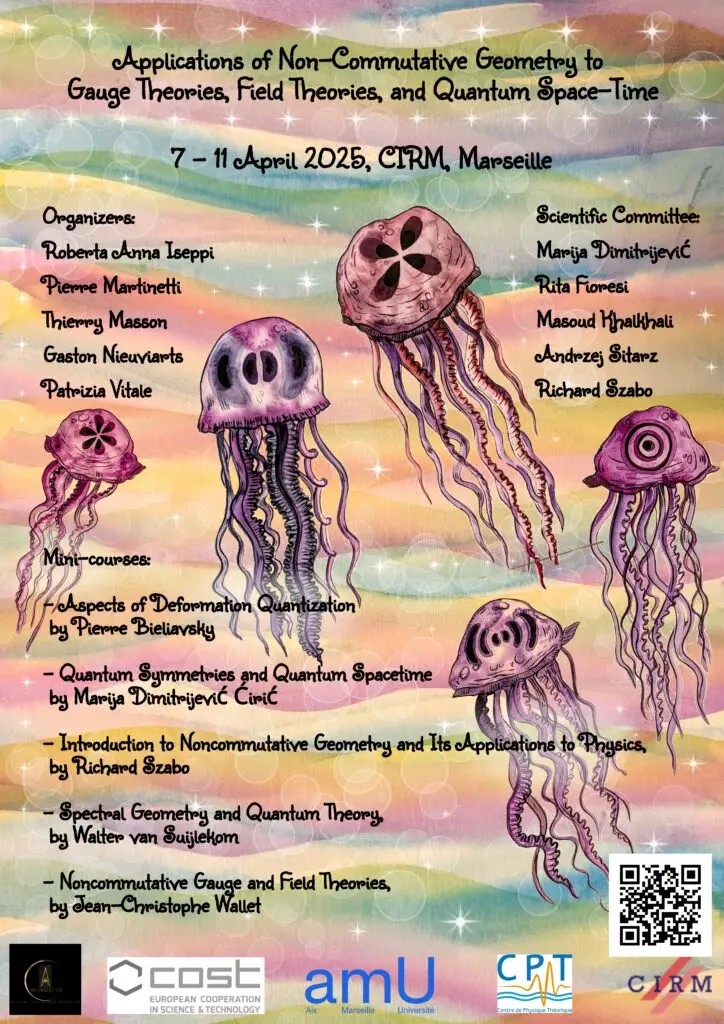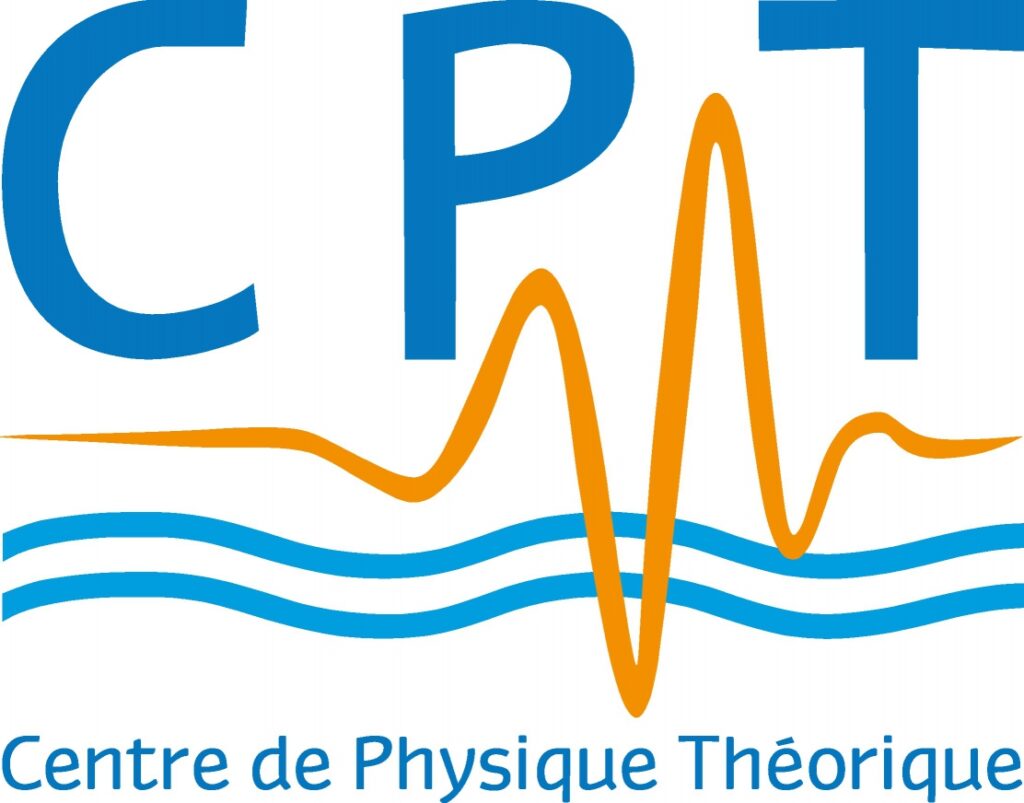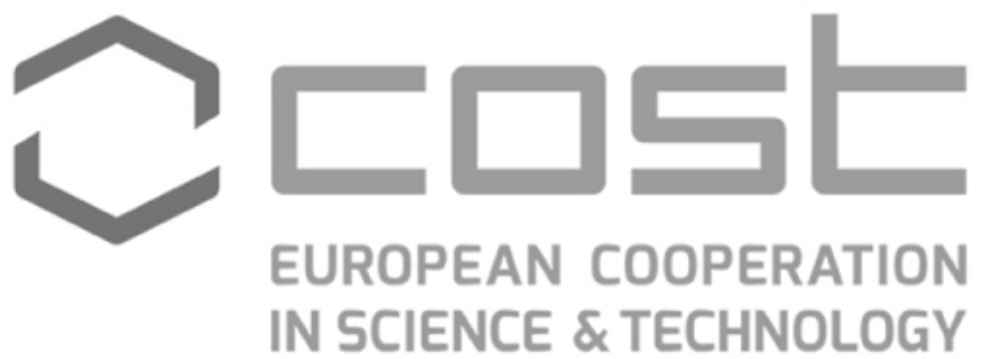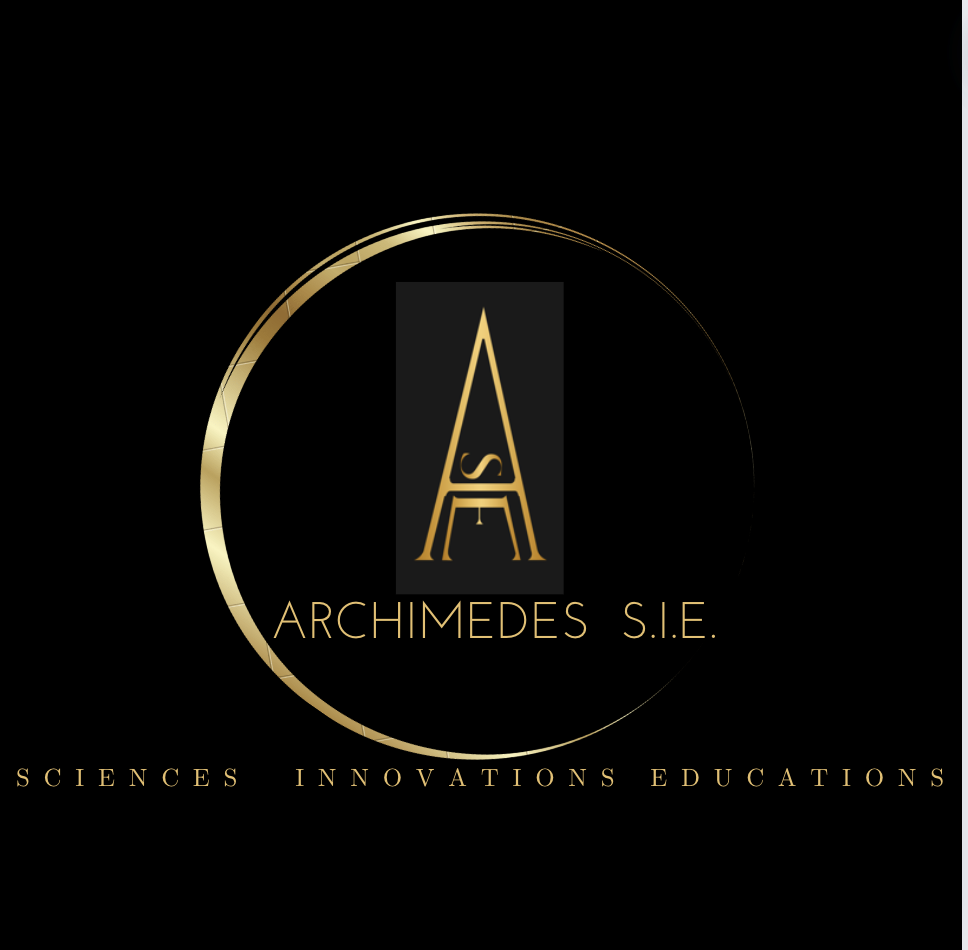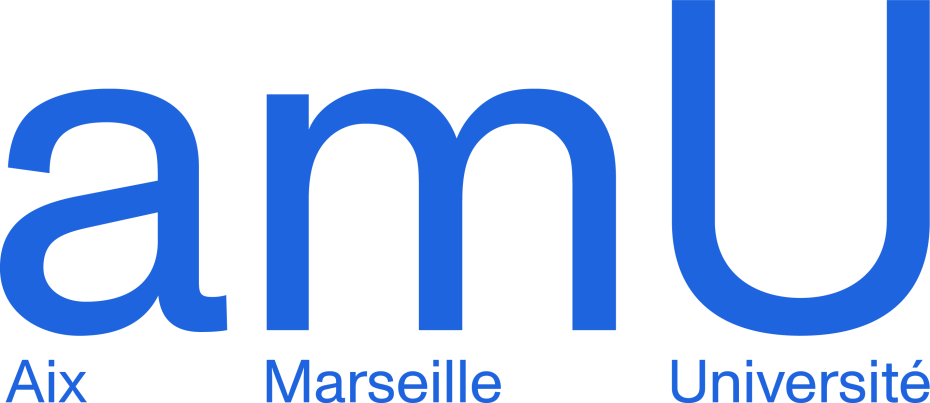Scientific Committee
Comité scientifique
Marija Dimitrijević (University of Belgrade)
Rita Fioresi (University of Bologna)
Masoud Khalkhali (University of Western, Ontario)
Andrzej Sitarz (Jagiellonian University)
Richard Szabo (Heriot-Watt University)
Organizing Committee
Comité d’organisation
Roberta Anna Iseppi (University of Göttingen)
Pierre Martinetti (UniGe, INFN)
Thierry Masson (CNRS, Aix-Marseille Université)
Gaston Nieuviarts (University of Genova)
Patrizia Vitale (University of Naples Federico II)
Understanding the geometry of space and time is an important question both for physics and mathematics. Since the advent of quantum mechanics and relativity, it is a challenge to reconcile the spectral view on space developed in quantum physics with the geometrical description of spacetime in general relativity. Noncommutative geometry is an attempt to overcome this opposition by enlarging the notion of geometry so as to incorporate its spectral nature.
The idea of making space noncommutative is probably as old as quantum mechanics, but it has developed considerably since the mid 80’s in various directions, from pure mathematics to theoretical physics, yielding some phenomenological predictions in high energy physics. The aim of this conference is the interplay between noncommutative geometry and physics, notably :
• the spectral description of standard model of fundamental interactions and the highlighting of an internal geometry of spacetime;
• the introduction of an extended notion of spacetime symmetries, and the consequences for physics;
• the proposal of novel frameworks for formulating field theories;
• potential new perspectives on the long-standing challenge of finding a quantum theory of gravity.
Comprendre la géométrie de l’espace et du temps est une question importante tant en physique qu’en mathématiques. Depuis l’avènement de la mécanique quantique et de la relativité générale, c’est un défi de concilier la vision spectrale de l’espace développée en physique quantique avec la description géométrique de l’espace temps en relativité générale. La géométrie non commutative est une tentative de surmonter cette opposition en élargissant la notion de géométrie afin d’incorporer sa nature spectrale.
L’idée de rendre l’espace non commutatif est probablement aussi ancienne que la mécanique quantique, mais elle s’est considérablement développée depuis le milieu des années 80 dans diverses directions, des mathématiques pures à la physique théorique, donnant également lieu à des prédictions phénoménologiques en physique des hautes énergies. L’objet de cette conférence est l’interaction entre la géométrie non commutative et la physique, notamment :
– la description spectrale du modèle standard des interactions fondamentales et la mise en évidence d’une géométrie interne de l’espace-temps ;
– l’introduction d’une notion étendue de symétries de l’espace-temps, et les conséquences pour la physique ;
– la proposition de nouveaux cadres pour formuler des théories des champs ;
– de nouvelles perspectives potentielles concernant le défi de longue date consistant à trouver une théorie quantique de la gravité.
MINI-COURSES
Pierre Bielavsky (Université Catholique de Louvain) Aspects of Deformation Quantization
Marija Dimitrijević Ćirić (University of Belgrade) Noncommutative field theory and quantum symmetries
Richard Szabo (Heriott Watt University, Edinburgh) Introduction to Noncommutative Physics
Walter van Suijlekom (Radboud University Nijmegen) Spectral geometry and quantum theory
LONG TALKS
Ali Chamseddine (American University of Beirut) Identifying the noncommutative unified space: A review
Alain Connes (Collège de France & IHES) Extremal Eigenvectors, the Spectral Action, and the Zeta Spectral Triple
TALKS
SHORT TALKS
Sebastián Franchino-Viñas (Università di Genova) Interacting quantum field theory in Snyder- de Sitter
Roberta Anna Iseppi (University of Göttingen) The BV quantisation in NCG: the case of Finite Spectral Triples
Kilian Hersent (Burgos University) Thermal aspects of noncommutative Minkowski: a new quantum gravity playground?
Gaston Nieuviarts (University of Genova) Lorentz symmetry from an almost-commutative twisted spectral triple
Chiara Pagani (University of Naples Federico II) Gauge transformations and Atiyah sequence of a noncommutative principal bundle
Farrokh Razavinia (Azarbaijan Shahid Madani University) Applications of the NC algebraic geometry in quantum computing
Carlos I. Perez Sanchez (University of Heidelberg) Noncommutative geometries on a quiver
Teun Van Nuland (TU Delft) Towards the Feynman rules of spectral QED
Thomas Weber (Charles University in Prague) Hopf-Galois extensions in noncommutative differential geometry


